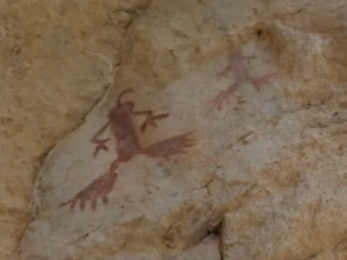I was one of seven featured alumni last week in the 90th anniversary issue of The Hoya newspaper. Here’s the full text, along with some of the video pieces I refer to in the article:
http://www.thehoya.com/opinion/field-work-grounded-classroom/
Field Work Grounded in The Classroom
 The classrooms were filled with the lingering haze of gray ash. The metal desks where students so recently listened to lectures were twisted by the heat into grotesque shapes. Blackened bubbles of paint streaked down the walls. The roof was completely burned away. The chalkboards showed a few recognizable marks from the last lessons before riots devastated this seminary in Kaduna, Nigeria.
The classrooms were filled with the lingering haze of gray ash. The metal desks where students so recently listened to lectures were twisted by the heat into grotesque shapes. Blackened bubbles of paint streaked down the walls. The roof was completely burned away. The chalkboards showed a few recognizable marks from the last lessons before riots devastated this seminary in Kaduna, Nigeria.The fighting that created this apocalyptic scene in February 2000 stemmed from the adoption of Shariah, or Islamic law, into the Nigerian state’s civil code. Christians living here saw Shariah as a threat. Civil rights groups feared harsh punishments — like amputation for theft and stoning for adultery — would soon be handed down to Nigerian citizens. Nigerian Muslims felt it was an integral part of their religious tradition. At first, the protests were peaceful. Yet Kaduna was soon filled with burning homes, schools and markets. Hundreds were killed by both Muslims and Christians. Cycles of retaliation spread the religious and ethnic conflict to other parts of the country.
I went to Kaduna a few weeks after the riots as a freelance television producer to speak to Muslims and Christians about the strife. It was hard to believe how shockingly brutal the fighting had been between people who had once lived as peaceful neighbors.
I learned much from both Muslims and Christians during the journey. I felt, however, there was much more to understand about the bigger picture when it came to the relationship between the Muslim world and the West. During my search for a university program that would help me explore these issues, I found the master’s degree program offered under Georgetown’s Center for Muslim-Christian Understanding. It was a chance to study under leading scholars in a field that was becoming increasingly significant on the world’s stage. I applied right away.
Then came Sept. 11, 2001. The classes I took with John Voll, Yvonne Haddad and John Esposito were filled with fellow students from all sides of the issue — from Muslim-Americans to those working in the intelligence community. It was an extraordinary time to study this topic.
We had many challenging class discussions about what the attacks meant for everything from domestic civil rights to foreign policy. More than once, the class conversations became heated. There were even tears shed by some students by the time the sessions were over. Prejudices were broken down. Understanding was built up. We learned as much from each other as we did from the lectures.
I was working at The Associated Press as a television and online video producer at the same time I was attending Georgetown. What I learned about the different facets of modern Islam translated directly into multimedia reports I filed for my job. The knowledge I gained at Georgetown about Shiite Islam helped inform my scripts about ethnic and religious divisions in Iraq. Some of those lively class discussions led to a story about what it was like to be a Muslim woman living in post-9/11 America.
My program at Georgetown also helped prepare me for a series of reports I worked on with AP’s religion reporters about the “the struggle for Islam.” These reports explored the internal debates within the Muslim community, from Egypt’s Muslim Brotherhood to Great Britain’s immigrant community and Muslims in American prisons.
My relationship with Georgetown continued after I finished my degree. The Prince Alwaleed Bin Talal Center for Muslim-Christian Understanding encouraged my ongoing research into the relationship between Muslims and Christians. This included a book and documentary about a group of Mennonites who migrated to Central Asia in the 1880s in search of religious freedom. These Mennonites also believed the Second Coming of Christ would occur in the Khanate of Khiva in 1889. After recovering from the shock of failed prophecies, these Christians remained in the Muslim kingdom. Over the decades they formed a prime example of peaceful cooperation and coexistence between two very different religious communities.
Today’s news industry is as demanding and competitive as it ever has been. Newspapers are declining, and online media are on the rise. The ability to produce a well-crafted story across platforms including text, video and interactive media is an ever more important skill. Some technical knowledge about these various platforms is essential. Nevertheless, there is no technical substitute for understanding the big issues of the day, and being able to communicate how those issues affect those around us. Good storytelling skills are crucial. I am proud to say that my experience at Georgetown enriched my personal understanding of those big issues, and has made me a better journalist.
Walter Ratliff (GRD ’04) is the content manager at the Associated Press in Washington, D.C. He is also the producer/director of the documentary “Through the Desert Goes Our Journey,” and author of “Pilgrims on the Silk Road: A Muslim-Christian Encounter in Khiva.”
www.PilgrimsOnTheSilkRoad.com


